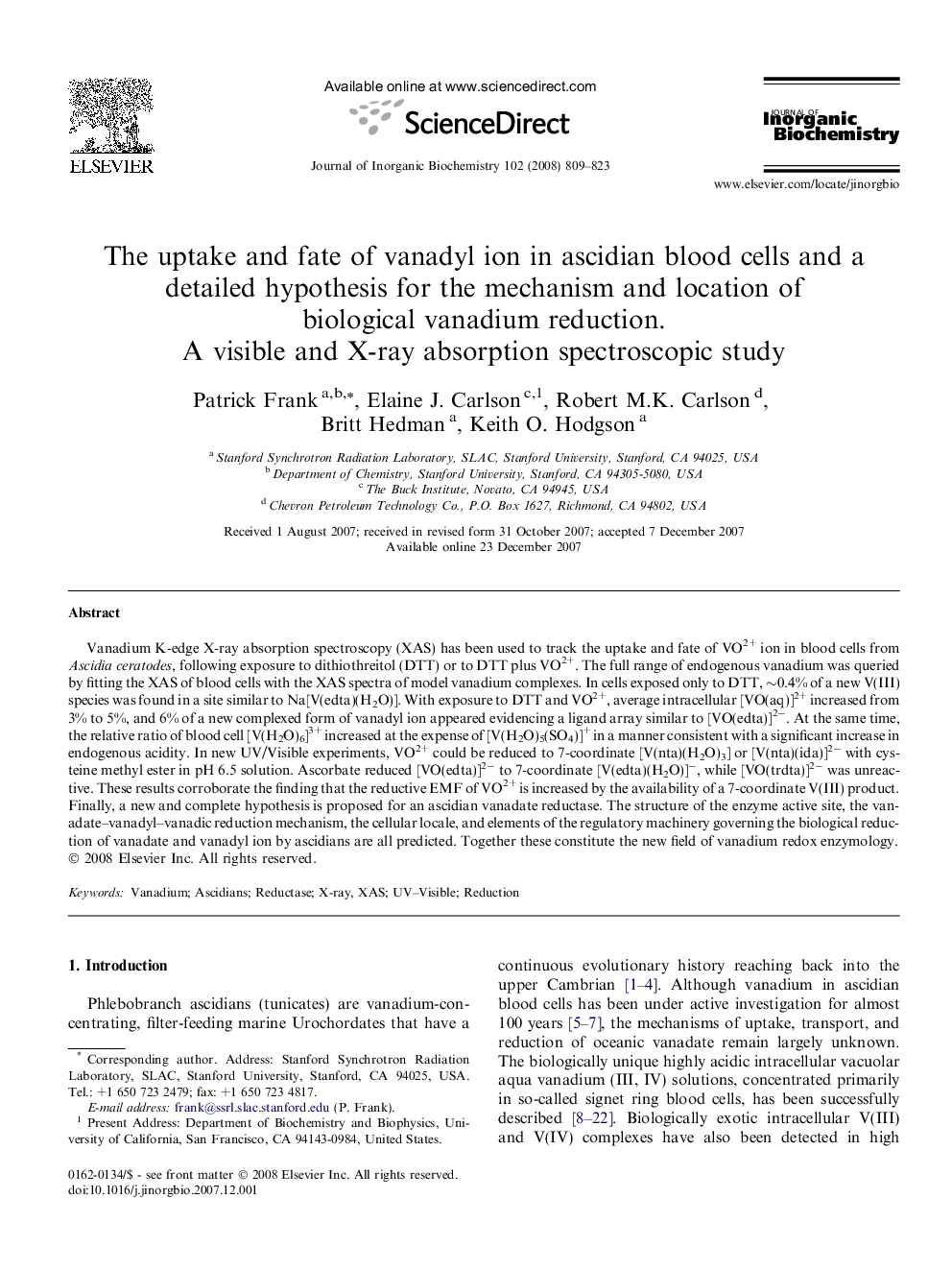| کد مقاله | کد نشریه | سال انتشار | مقاله انگلیسی | نسخه تمام متن |
|---|---|---|---|---|
| 1316948 | 976494 | 2008 | 15 صفحه PDF | دانلود رایگان |

Vanadium K-edge X-ray absorption spectroscopy (XAS) has been used to track the uptake and fate of VO2+ ion in blood cells from Ascidia ceratodes, following exposure to dithiothreitol (DTT) or to DTT plus VO2+. The full range of endogenous vanadium was queried by fitting the XAS of blood cells with the XAS spectra of model vanadium complexes. In cells exposed only to DTT, ∼0.4% of a new V(III) species was found in a site similar to Na[V(edta)(H2O)]. With exposure to DTT and VO2+, average intracellular [VO(aq)]2+ increased from 3% to 5%, and 6% of a new complexed form of vanadyl ion appeared evidencing a ligand array similar to [VO(edta)]2−. At the same time, the relative ratio of blood cell [V(H2O)6]3+ increased at the expense of [V(H2O)5(SO4)]+ in a manner consistent with a significant increase in endogenous acidity. In new UV/Visible experiments, VO2+ could be reduced to 7-coordinate [V(nta)(H2O)3] or [V(nta)(ida)]2− with cysteine methyl ester in pH 6.5 solution. Ascorbate reduced [VO(edta)]2− to 7-coordinate [V(edta)(H2O)]−, while [VO(trdta)]2− was unreactive. These results corroborate the finding that the reductive EMF of VO2+ is increased by the availability of a 7-coordinate V(III) product. Finally, a new and complete hypothesis is proposed for an ascidian vanadate reductase. The structure of the enzyme active site, the vanadate–vanadyl–vanadic reduction mechanism, the cellular locale, and elements of the regulatory machinery governing the biological reduction of vanadate and vanadyl ion by ascidians are all predicted. Together these constitute the new field of vanadium redox enzymology.
Journal: Journal of Inorganic Biochemistry - Volume 102, Issue 4, April 2008, Pages 809–823